Matador Network's Blog, page 841
June 11, 2020
IOC ruling on 2021 protests

It’s been four years since Colin Kaepernick refused to stand for the national anthem before a game against the Green Bay Packers, but the controversy surrounding “taking a knee” hasn’t abated. After several sports decided to allow some forms of protest following the Black Lives Matter protests, the International Olympic Committee (IOC) has announced that athletes who protest at the 2021 Games will still be facing disciplinary action.
The rule isn’t new. It’s part of the Olympic Charter, which states that “no kind of demonstration of political, religious, or racial propaganda is permitted in any Olympic sites, venues or other areas.” Banned protests include taking a knee, raising a fist, or wearing armbands or signs on the field of play, in the Olympic Village, during Olympic medal ceremonies, during the opening, closing and other official ceremonies. The IOC does, however, allow athletes to express personal opinions in post-competition interviews and on social media.
According to the charter, athletes who choose to protest will be disciplined on a case-by-case basis.
On Wednesday, IOC president Thomas Bach said that the committee would explore ways for athletes to express their “support for the principles enshrined in the Olympic charter in a dignified way.” he added “We also agree at the same time with the Athletes’ Commission we must always respect the Olympic spirit. This means we must make a difference between such a support for the principles enshrined in the Olympic charter and potentially divisive demonstrations.” 
More like thisNewsThese images show how Black Lives Matter protests have spread around the globe
The post International Olympic Committee to ban any form of protest during the 2021 Games appeared first on Matador Network.

United health self-certification
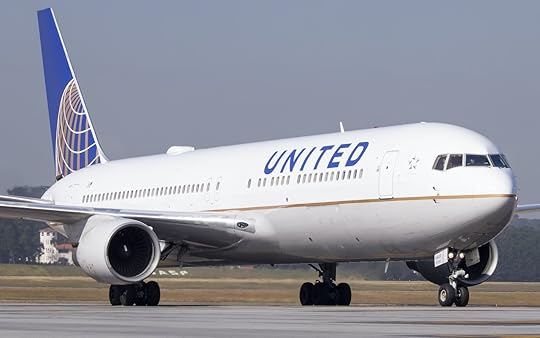
Flying looks different these days, even for short domestic trips. In addition to face-mask-wearing and reduced touchpoints in airports, some airlines are now requiring passengers to declare a clean bill of health before boarding. On Wednesday, June 10, United Airlines announced that they will require passengers to self-certify their health by completing a health questionnaire before boarding. The form will ask passengers to acknowledge that they have not had any coronavirus symptoms in the past 14 days or tested positive for the virus in the past 21 days.
According to United, passengers who cannot self-certify their health will not be allowed to board, but they will be permitted to reschedule their flight. Every airline is handling health concerns differently, with some relying on TSA to do the bulk of the heavy lifting. While Frontier Airlines plans to take the temperature of each passenger prior to boarding, many are asking TSA to do so during security checks.
The health certification is just one of several health precautions United is taking. It was one of the first airlines to mandate face coverings for passengers during flights. 
More like thisNewsThe future of air travel is uncertain, but here’s what it might look like
The post United becomes the first airline to require passengers to self-certify their health appeared first on Matador Network.

First woman to go deepest ocean spot

On October 11, 1984, astronaut Kathryn D. Sullivan spent three hours outside the Challenger spacecraft as it orbited the earth. The accomplishment made her the first American woman to walk in space. Sullivan, a career high-achiever who worked as a geologist prior to becoming an astronaut and is now an oceanographer, has taken her scientific exploration in the literal opposite direction — to the deepest depths of the earth’s ocean.
On Sunday, June 7, Sullivan descended seven miles to the Challenger Deep, the farthest known point of the Mariana Trench. Explorer Victor L. Vescovo also took part in the dive and financed the mission. Sullivan emerged as the first person to both walk in space and reach the deepest point of the ocean, and the first woman to reach the Challenger Deep.
“As a hybrid oceanographer and astronaut this was an extraordinary day, a once in a lifetime day, seeing the moonscape of the Challenger Deep and then comparing notes with my colleagues on the ISS about our remarkable reusable inner-space outer-spacecraft,” Sullivan said on Monday in a statement from EYOS Expeditions, the company behind the mission.
After reaching the surface, Sullivan called the International Space Station, 254 miles above the earth, to commemorate the accomplishment. The Mariana Trench is located in the Pacific Ocean about 200 miles east of Guam. Including Sullivan and Vescovo, Eight divers have reached the Challenger Deep. 
More like thisNewsExplorer becomes the first person to dive to the oceans’ deepest spots
The post NASA astronaut becomes first woman to reach deepest point in the ocean appeared first on Matador Network.

Racist memorials being taken down
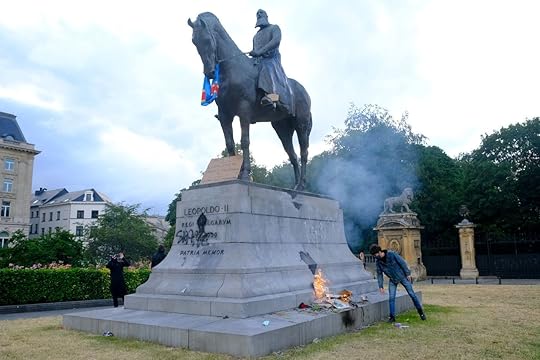
One of the most immediate results of the Black Lives Matter protests has been the removal of racist statues — not just in the United States, but around the world. Since protesters took to the streets last week after the murder of George Floyd by a white police officer in Minneapolis, statues of Confederate soldiers, slave traders, and other racist figures have either been torn down by crowds, or removed by city officials. From Boston’s statue of Christopher Columbus to a monument dedicated to King Leopold II in Belgium, symbols of white supremacy are finally getting the treatment they deserve.
Philadelphia, Pennsylvania
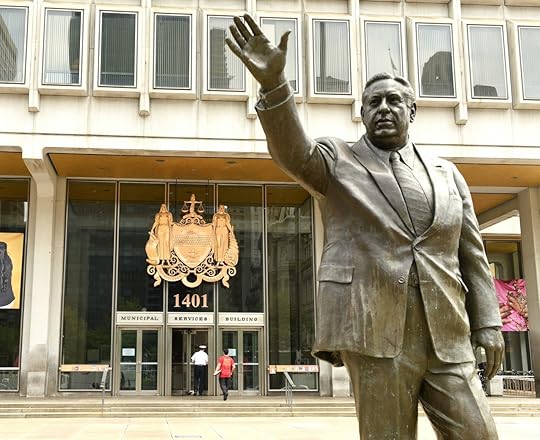
Photo: Bumble Dee/Shutterstock
On June 3, 2020, the city removed a statue of Frank Rizzo, a racist former Philadelphia mayor and police commissioner. The statue had been slated for removal for three years, but when protesters attempted to light it on fire and bring it down using a rope, it prompted the city to finally take steps to take it down. “The statue represented bigotry, hatred, and oppression for too many people, for too long. It is finally gone,” said current Philadelphia Mayor Jim Kenny on Twitter.
Birmingham, Alabama
Protesters tear down a statue in Linn Park in Birmingham Sunday night.
–> https://t.co/lDlyoMxp6S pic.twitter.com/OHrz2GOlLF
— WBRC FOX6 News (@WBRCnews) June 1, 2020
Two monuments — a five-story-tall obelisk commemorating Confederate troops and a statue of Charles Linn, a Confederate officer and one of Birmingham’s founders — were taken down in Birmingham last week.
The statue of Charles Linn was torn down by protesters, but the obelisk, known as the Confederate Sailors and Soldiers Monument, was removed by the city on June 2, 2020. After protesters vandalized the monument and attempted to topple it following the online instructions of a professor of Egyptology at the University of Alabama at Birmingham, Randall Woodfin, city mayor, told the crowds he would “finish the job.”
Boston, Massachusetts
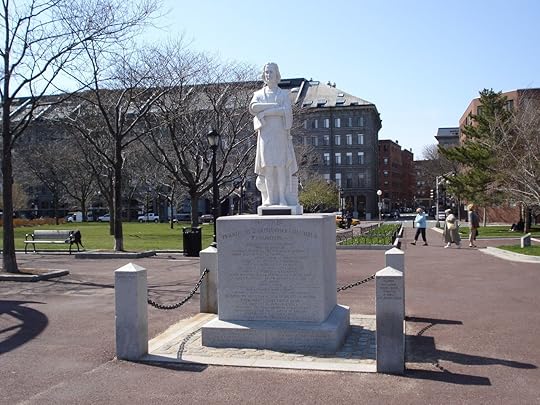
Photo: Marcos Carvalho/Shutterstock
A statue of Christopher Columbus located in Boston’s North End neighborhood was taken down by the city on June 9, 2020, after it was beheaded by protesters.
Other statues of the controversial explorer, who violently exploited and killed indigenous people in the Americas in the 15th and 16th centuries, were torn down in cities like St. Paul, MN and Richmond, VA.
Richmond, Virginia
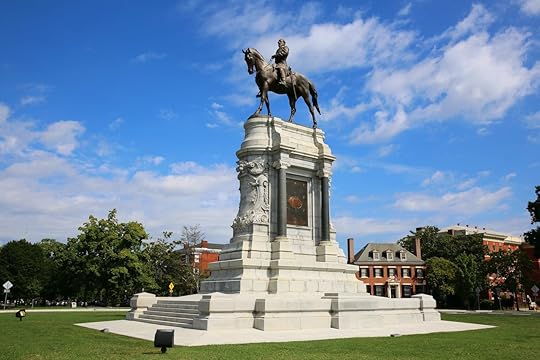
Photo: Mark Dozier/Shutterstock
A statue of Christopher Columbus in Byrd Park was torn down by protesters using ropes, and then set on fire and thrown into a lake.
Richmond will also see the removal of one of its most recognizable monuments. A giant statue of Confederate General Robert E. Lee is now slated to be removed from its visible location on Monument Avenue and placed in storage. Protesters covered the statue in graffiti a couple of weeks ago, and last Thursday, Richmond Mayor Levar Stoney announced the statue’s removal.
Bristol, England
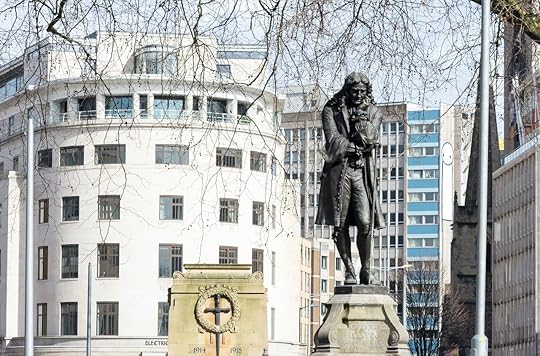
Photo: Jacek Wojnarowski/Shutterstock
In Bristol, a statue of 17th-century slave trader Edward Colston was brought down by protesters with ropes. The statue has been controversial for several years, but the recent global events have thrust it into the spotlight. When the statue fell, a protester was pictured with his knee on Colston’s neck, emulating the way George Floyd was killed. The statue was then dragged through the streets of Bristol and thrown into the harbor. Bristol Mayor Marvin Rees said the statue will be retrieved and displayed in a museum along with objects from the Black Lives Matter protests.
View this post on InstagramA post shared by 13E (@iam13e) on Jun 7, 2020 at 9:49am PDT
Eighty-five miles away, in Oxford, a statue of Victorian imperialist Cecil Rhodes, located at Oriel College, is creating controversy. While many want the statue taken down, no action has been taken yet. There are talks about adding a plaque beside the statue to provide historical context rather than remove it entirely.
Antwerp, Belgium

Photo: Alexandros Michailidis/Shutterstock
Statues of King Leopold II are being defaced all over Belgium, and many are calling for their removal. In Antwerp, protesters set a statue of Leopold II on fire last week, and it was subsequently taken down by authorities. When he was in power in the 19th century, he seized the Congo and led an exploitive and violent regime. Belgians have long criticized the statues as symbols of the country’s violent colonial history. 
More like thisMuseums11 must-see African American heritage sites in the US this year
The post 6 racist statues around the world that are finally being taken down appeared first on Matador Network.

Why sharing lists of Black-owned restaurants isn’t enough

When Karen Umeda decided to make a list of Black-owned restaurants for every borough in New York, she didn’t anticipate that many people would notice. The 20-year-old design student, who lives in Manhattan, posted the first list for Brooklyn, Manhattan (plus an additional post for the Harlem neighborhood), and Queens on May 31; protests against police brutality instigated by George Floyd’s death had been happening for five days already. She had also read disturbing statistics about the effects of COVID-19 on the Black community — that while Black people make up just 30 percent of the population of Chicago, they account for 70 percent of coronavirus deaths, for instance. Umeda felt called to use her skills as a designer to boost Black-owned businesses.
“I wanted to come up with ways in which we could support the Black community,” Umeda tells me. “Not just as of right now, when there are tragedies and protests happening, but things you can do in the long run to redistribute your capital and invest in these communities.”
Umeda’s idea struck a chord: The first list quickly garnered more than 45,000 likes on Instagram; the second list, which covered Long Island and the Bronx, netted around 15,000. As Umeda points out, “some people are scared of getting involved with protests, or might be at risk for getting COVID-19.” Still, people are eager for ways to monetarily support Black communities beyond donating to worthy causes or taking to the street with a sign. However, there’s no guarantee that these lists will result in direct, sustained action that Black-owned businesses need to remain a stable presence in their communities — and that’s a problem.
Umeda’s lists are short. She did all the research herself and says it turned out to be harder than she thought to verify which restaurants throughout the city are Black-owned. But soon others began to pick up the slack: The app Queens Eats reached out to collaborate with Umeda to expand her initial lists. In the following days, city-specific lists of Black-owned restaurants began to pop up all over social media, including Los Angeles, Washington, DC, Portland, Seattle, and Atlanta (The New Yorker’s food correspondent Helen Rosner saved each list she found to a story highlight on her Instagram).
But as social media reached its saturation point with lists of Black-owned restaurants (and book stores, wine professionals, and food bloggers to follow) questions about their effectiveness began to take hold.
“I think in the white privilege world in which I exist, people have a lot of plausible deniability,” Zachary Fagenson says. A restaurant critic in Miami for the past eight years, Fagenson wrote a list of Black-owned restaurants which also went viral.
“This information is out there now in some small way, and enough people have seen it that [white people] can’t justify saying ‘Well, we didn’t know,’” Fagenson says. “Well now, it’s there. A lot of people are going to go to a black owned restaurant this week. I think my question is, are people in six months going to think it’s still important?”
Sharing lists of Black-owned businesses and Black creators might result in a momentary uptick in sales and followers at best, as well as a moment of guilt-assuaging action for the people who repost them. However, long-term action to make sure diversity is still a priority in restaurants after the demonstrations have died down will take hard work.
In an Instagram post from June 2, Aretah Ettarh, a chef at Gramercy Tavern, wrote that she hoped white restaurant owners and chefs who had expressed “solidarity” will be “equally as vocal on how they plan to actively increasing the number of black employees in their own businesses [and] creating a company culture that makes black employees want to stay.” Otherwise, their solidarity looks “disgenious and performative.”
Ettarh’s statement reinforces that these lists, though well-intentioned, don’t always result in direct action, and can even feel like empty gestures. White and non-Black people who claim to support this movement now face an important quandary: For now, they are putting their energy toward finding ways to support Black people financially, but how long will that motivation last?
“Have the lists generated awareness and a small surge in business? Sure, but what actual work will knee-jerk patrons follow once palates grow bored and the media circuit fades out?”
People can make diversity in restaurants and food a priority by spending their money at establishments that create a safe and supportive environment for everyone from Black chefs to the undocumented workers who keep many restaurants running. But it’s essential that we keep up the momentum. Because the end goal is not just to spend our money at Black-owned restaurants — it’s to restructure the industry so that it doesn’t thrive on low wage work, an abusive work environment, and the appropriation and outright theft of cooking techniques pioneered by people of color.
“People tend to go with what’s easiest, cheapest, or right in front of their eyes,” food writer Aaron Hutcherson tells me in a Twitter direct message. “To find and support Black and other minority-owned businesses often requires some amount of sacrifice — either by exerting extra effort to find them, or paying more money when they charge for what their services are actually worth.”
Hutcherson’s point reveals that many of these lists are impractical. It doesn’t seem likely that when someone picks up lunch for their coworkers or gets tired of cooking for their kids, they’ll pull up one of these databases. Ideally, everyone would make a conscious effort to research where their money goes, but it seems more likely that laziness will take over and most people will revert back to making purchases from the most familiar places. And ordering takeout from a Black-owned restaurant once or twice might feel like monetary support, but it’s not actually an effective way to help these businesses thrive in the long run. That would require consistency.
While Hutcherson does see the value in lists of Black bloggers that people should follow “because an increase in followers and page views has a direct correlation with an increase in income from ad revenue and what we are able to charge for sponsored posts,” he adds that “one sale or one click here and there do nothing for building the wealth that our community needs to prosper.”
Sustained supportive action, which can also be translated into financial reward, requires publishing in-depth profiles about these businesses in national outlets year-round, as well as featuring them organically in recommendations of best restaurants, hotels, and in city guides. Articles centering Black business people and chefs raise their profile, get customers in seats, and attract awards attention.
“One person who has a Black business blog said [to me] that he doesn’t really believe that an Excel spreadsheet is going to move the needle,” Fagenson says. “He said, what a lot of people need is a feature that tells the story of their lives and their businesses and shows who they are and what they do with pictures.”
Promoting and sharing lists of Black-owned restaurants only highlights one small part of a bigger picture: The restaurant industry is steeped in racism, and spending a little bit of money here and there isn’t a viable long-term solution. The system needs to be rebuilt from the bottom up so that Black chefs are promoted and offered leadership positions and Black businesses have access to loans to help them stay open.
“The curation and promotion of Black-owned restaurants is like placing a bandaid on the larger issue of racism within the hospitality space, an industry which was built on the backs of Black and Brown people,” Shanika Hillocks, a food and spirits writer, tells me in an email.
Hillocks said that in the eight years she’s lived in Harlem, she’s pitched stories about Black-owned and run restaurants to well-circulated media outlets, “only to receive skepticism or silence.” Suddenly, those same publications are eager to elevate to those restaurants after being called out for whitewashing their coverage, and because Black Lives Matter is trending in the news. Hillocks thinks that once the new cycle’s attention span runs out, interest in covering Black-owned restaurants will run out, too.
“Have the lists generated awareness and a small surge in business?” she asks. “Sure, but what actual work will knee-jerk patrons follow once palates grow bored and the media circuit fades out?”
Spending your dollars at Black-owned businesses is a small gesture of support. But to show meaningful solidarity, we must demand that restaurants prioritize diverse hires and liveable wages, and that media outlets cover Black-owned businesses even when Black Lives Matter isn’t saturating the news. Only then will we start to see industries with racism built into their structure change for the better. 
More like thisSki the Powder Highway in British Columbia, Canada
The post Why sharing lists of Black-owned restaurants isn’t enough appeared first on Matador Network.

Drone captures over 64,000 turtles
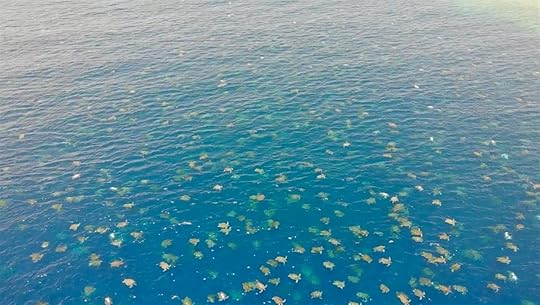
Each year, thousands of turtles come together on the beaches of Australia’s Great Barrier Reef to lay their eggs. Last year’s footage of the event was released by Queensland’s Department of Environment and Science (DES) yesterday and it’s spectacular. The scientists used a drone to capture video of over 64,000 green turtles congregating at Raine Island, a coral cay about 385 miles northwest of Cairns.
Green turtles gravitate toward the tropical and subtropical waters surrounding Australia and some parts of the Mediterranean. They choose a remote environment with a favorable climate to ensure the protection of their young. Once mature, the turtles usually return to their own birthplace to hatch, even if they haven’t been in the area in over 30 years.
Raine Island is home to the largest green turtle rookery on the planet, but the numbers are dwindling. Last year, green turtles reproduced less due to their environment becoming more inhospitable. The flooding of nests and the danger of being trapped in fishing equipment also pose serious threats to the species.
Counting the tens of thousands of turtles that congregated last year was no easy feat. The Australian researchers marked each turtle shell with white, non-toxic paint while on the beach, and attempted to count them from a boat. The task proved difficult and the results were inaccurate, so they resorted to using drones.
“Trying to accurately count thousands of painted and unpainted turtles from a small boat in rough weather was difficult. Using a drone is easier, safer, much more accurate, and the data can be immediately and permanently stored,” Dr. Andrew Dunstan, senior researcher at DES, said in a statement. The research will help scientists understand, manage, and protect the green turtle population more efficiently in the future. 
More like thisNewsChina boosts protection of pangolins by removing scales from medicine list
The post Incredible drone footage captures over 64,000 turtles nesting in Australia appeared first on Matador Network.

June 10, 2020
Sweden Midsummer live stream 2020

Sweden’s annual Midsummer celebration is one of the country’s most treasured traditions, but this year, the event will prove a bit different as the COVID-19 pandemic continues to pose health risks and large gatherings are canceled.
The holiday isn’t being done away entirely, however. Small outdoor gatherings with friends and families will take place in Sweden, and some Midsummer celebrations from all over the country will be broadcast via live stream on Friday, June 19, 2020.
The Facebook live stream, organized by Visit Sweden, will have local Swedish hosts from all over the country guide viewers through Midsummer traditions like making flower wreaths and dancing around the maypole.
The online virtual schedule is as follows (all times are Eastern time):
5:00 AM — Flower wreath-making in Skåne
7:00 AM — Midsummer lunch in West Sweden
9:00 AM — Dancing around the Midsummer pole in Dalarna
1:00 PM — Flower picking and evening dip in Roslagen
6:00 PM — Midnight sun and skiing in Swedish Lapland
Midsummer is a celebration of the summer solstice, the welcoming of the hot season, and the longest day of the year. 
More like thisCultureThe 8 coolest places in Sweden worth visiting outside of Stockholm
The post Sweden will live stream its Midsummer celebrations online this year appeared first on Matador Network.

Cinquefrondi, Italy, $1 houses

Italy was severely hit by COVID-19 this winter, but with the hope that the bad days are over, the nation is now looking to the future. Italy is slowly reopening to tourism this month, and one town has even gone back to selling homes for just $1. Cinquefrondi, a town in the southern region of Calabria that claims to be free of the coronavirus, is selling homes for just $1 in one of Italy’s many attempts at repopulating abandoned villages.
Michele Conia, the mayor of Cinquefrondi, told CNN, “Finding new owners for the many abandoned houses we have is a key part of the Operation Beauty [mission] that I have launched to recover degraded, lost parts of town. I grew up in Germany where my parents had migrated, then I came back to save my land. Too many people have fled from here over the decades, leaving behind empty houses. We can’t succumb to resignation.”
The town has reported zero coronavirus cases among its residents and is located in a region with one of Italy’s lowest levels of spread.
If you take advantage of the $1 offer, you will be expected to renovate the house, with an annual policy insurance fee of $284 until the renovation is complete. If you do not complete the renovation within three years, you’re on the hook for a $22,700 fine.
The houses are mostly small, located in a historical part of town, and some have a balcony view.
According to the mayor, “We rise between the refreshing hills and two warm seas, a pristine river runs nearby and the beaches are just 15 minutes away by car.”
To inquire about homes available as part of Operation Beauty, you can reach out at protocollo@pec.comune.cinquefrondi.rc.it. 
More like thisCyclingHow to cycle along the unspoiled coastline of Puglia, Italy
The post This ‘COVID-free’ Italian town is selling houses for just $1 appeared first on Matador Network.

HBO Max removes ‘Gone with the Wind’

An old classic is going to be absent from HBO Max, at least temporarily. Gone with the Wind has been removed from the channel in the wake of criticism that the film depicted racist attitudes out of context.
According to HBO Max, the 1939 film was “a product of its time and depicts some of the ethnic and racial prejudices that have, unfortunately, become commonplace in American society. These racist depictions were wrong then and are wrong today, and we felt that to keep this title up without an explanation and a denouncement of those depictions would be irresponsible.”
Gone with the Wind is based on the novel by Margaret Mitchell and features slave characters who appear comfortable with their position and show immense loyalty to their former owners even after slavery’s abolition.
John Ridley, screenwriter of 12 Years a Slave, wrote an op-ed in the Los Angeles Times this week asking HBO Max to remove the film. “It is a film that glorifies the antebellum south,” he said. “It is a film that, when it is not ignoring the horrors of slavery, pauses only to perpetuate some of the most painful stereotypes of people of color. The movie had the very best talents in Hollywood at that time working together to sentimentalize a history that never was.”
A CNN spokesperson said that when the film does return to HBO Max, “it will return with a discussion of its historical context and a denouncement of those very depictions … because to do otherwise would be the same as claiming these prejudices never existed. If we are to create a more just, equitable and inclusive future, we must first acknowledge and understand our history.”
According to Ridley, he’s not hoping the film never again sees the light of day. “I don’t believe in censorship,” he wrote. “I would just ask, after a respectful amount of time has passed, that the film be re-introduced to the HBO Max platform along with other films that give a more broad-based and complete picture of what slavery and the Confederacy truly were.” 
More like thisMoviesStudio Ghibli’s global perspective celebrates a multicultural world
The post HBO Max temporarily pulls ‘Gone with the Wind’ over its depictions of race appeared first on Matador Network.

BIPOC outdoor Instagram influencers

Outdoor media has long been dominated by white voices and faces. Progressive ideals of conservation and activism, let alone the pursuit of adventure stoke, mean nothing if others seeking the same goals feel discouraged or boxed out by not being represented. Across the outdoors community, Black- and Brown-owned organizations and influencers of color have long been crushing it in the outdoors — and it’s past due for everyone to start paying attention. Here are just a few of the many amazing accounts on Instagram from BIPOC outdoor adventurers, athletes, and conservationists.
1. Melanin Base Camp, @melaninbasecamp
View this post on InstagramA post shared by Melanin Base Camp (@melaninbasecamp) on Jun 7, 2020 at 11:28am PDT
Danielle Williams founded the blog and activism site Melanin Base Camp, a resource for BIPOC in the outdoors and a tool for promoting inclusivity, including one of the most complete guides to how white people can be effective allies of the movement.
2. Gina Danza, @wildginaa
View this post on InstagramA post shared by WILD GINA | Photo / Video (@wildginaa) on Jun 9, 2020 at 8:17am PDT
Photographer Gina Danza travels across the United States to capture nature in all her glory. Her channel documents her adventures and her impeccable eye for unique shot angles — some with human subjects, many with the landscape as the standalone star.
3. Ivah Wilmot, @ivah_the_great
View this post on InstagramA post shared by ⚜Your Friend⚜ (@ivah_the_great) on Apr 29, 2020 at 4:51pm PDT
You’d be hard-pressed to find an Instagram channel that gets you more stoked to get out on the water than Jamaican surfer and musician Ivah Wilmot’s. He shares new tunes via social and shreds epic waves around the world.
4. Samarria Brevard, @samarriabrevard
View this post on InstagramA post shared by samarriabrevard (@samarriabrevard) on Jul 6, 2018 at 5:04pm PDT
Skateboarder Samarria Brevard was the first Black woman to medal at the X-Games, taking silver in Street in 2017. Her Instagram channel is a mix of rad skate shots and activism, coupled with promos for Brevard’s video parts, the content of which will have you questioning whether gravity actually exists.
5. The Black Outdoors, @theblackoutdoors
View this post on Instagram
Matador Network's Blog
- Matador Network's profile
- 6 followers



